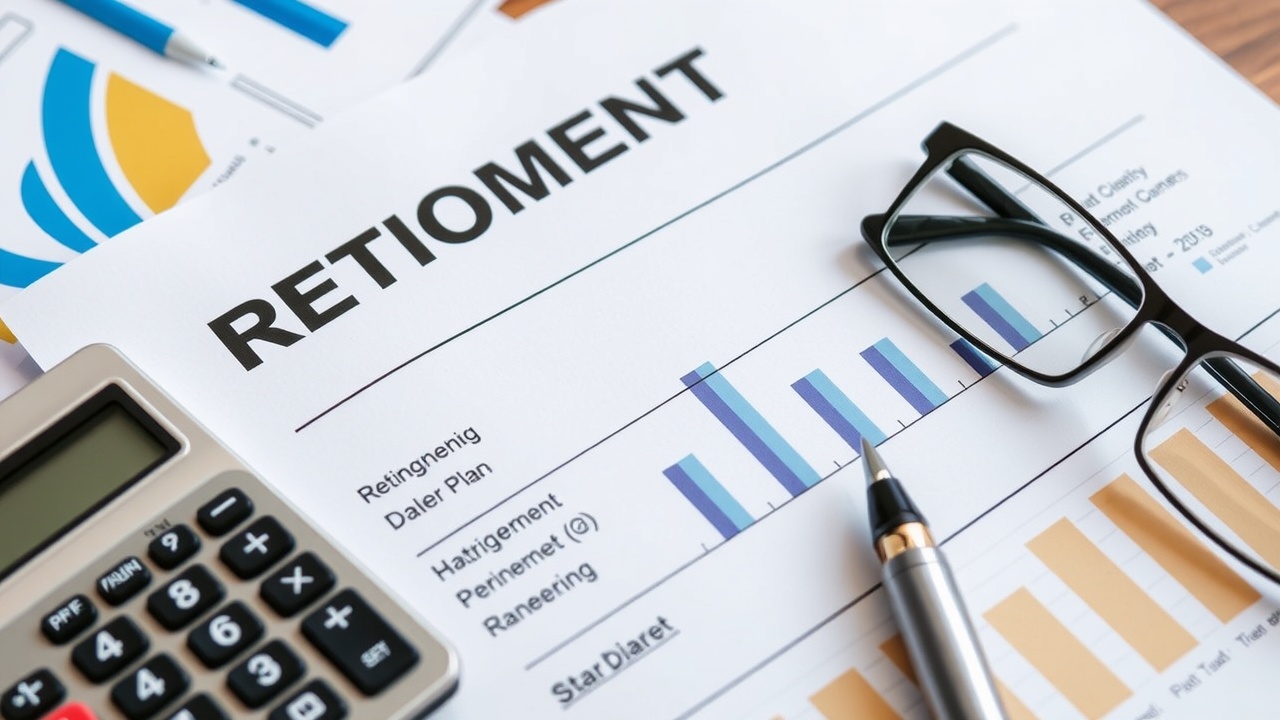
Making the right choice for your retirement funds is important ; it could improve your financial situation by thousands of pounds
We describe how a workplace pension and a SIPP differ from one another.
The pot you will eventually have to live on after you quit your job depends greatly on where you save for retirement and how you invest the funds.
Being employed, as opposed to self-employed, entitles you to a workplace pension plan, to which you and your employer make monthly contributions.
Another option is to save for retirement through a personal pension plan, like a SIPP (Self-Invested Personal Pension). Several factors influence your choice of where to save, or you may use both.
What you should know about your choices is provided here.
What's a workplace pension?
As part of your employment contract, your employer may offer a workplace pension plan. As long as you also make contributions, they will help pay for your pension. A portion of your pay will be used to cover the cost.
They will pay you more the more you make. By law, they must pay a minimum of 3 percent, and you must pay an additional 5 percent, for a total of 8 percent.
An external pension provider typically offers the plan, and your money will be invested in accordance with the options available in that scheme, which usually include bonds and shares (equities) through investment funds.
The majority of workplace pensions are defined contribution plans that invest both your employer's and your own contributions. The performance of those investments will determine the pot's final value.
The performance of the stock market is not a factor in a different kind of workplace pension called a defined benefit plan or final salary plan. Instead, the number of years you have worked there and your retirement salary are used to determine the value of your annual pension. These schemes are becoming increasingly uncommon.
A SIPP: What is it?
A simple pension plan with a crucial tax wrapper around your retirement funds is called a SIPP.
Contributions to SIPPs are tax deductible, so you can make contributions and the tax deduction will be added, increasing your total savings.
You can apply for additional relief on your self-assessment tax return if you are a top rate or higher rate taxpayer.
What distinguishes a SIPP from a workplace pension?
Your employer organizes a workplace plan in which they will pay contributions on your behalf. Contributions are made by you to a SIPP, which is a personal pension managed by the individual.
Pension plans may also differ in how they operate in retirement. Flexible retirement is not a feature of every workplace pension plan.
An investment strategy that automatically lowers the risk of how your money is invested may be included in a workplace pension. When you think the time is right, you can make changes to the money held in a SIPP.
What are the differences between a SIPP and a workplace pension?
The best thing about a workplace pension is that, aside from making your monthly payment, which is done automatically unless you choose to opt out, you don't have to do anything to keep it running.
In addition to providing yearly statements, your employer and payroll will handle the investment of your funds.
Unless you seek the assistance of a financial advisor, a SIPP requires you to perform the legwork. To ensure you're on track, you must make investment decisions and evaluate them annually.
There is no doubt that the largest benefit of saving in a workplace pension as opposed to a SIPP is that you will not receive contributions from your employer, who will contribute at least 3% of your pay.
What benefits does a SIPP offer over a workplace pension?
Having investment control is the primary benefit of a SIPP over a workplace pension. You are totally in control of where and how your money is invested. You have two options: ask an adviser for recommendations, or choose the funds yourself. Therefore, people who desire freedom and flexibility would benefit greatly from a SIPP.
The selection of investments is another benefit. SIPPs typically provide a large selection of investment options, whereas workplace pensions may only provide a small number. Many thousands of investment funds are regularly made available through SIPP providers.
Charges are an additional factor to contemplate. Pensions are not free, just like investing. While SIPP fees are competitive, some workplace pensions, especially those that are older, may have higher fees.
With a SIPP, which makes it easy to convert into a pension drawdown plan and access your funds, options offered at retirement may be more flexible. Flexible ways to access your money in retirement are not available in all workplace plans.
We examine how to choose a SIPP in another article.
Can you have both a workplace pension and a SIPP?
Both a personal pension and several workplace plans are feasible.
AJ Bell's Rachel Vahey states: "You might want to consider other strategies to increase your pension savings after you have maxed out your employer's contributions into your workplace pension. Regardless of the company you work for, you can accumulate your own pension fund by contributing to a SIPP on top of your workplace pension.
It's crucial that you stay within the pension's annual allowance, even though you are free to continue making contributions to multiple at once.
Because you cannot pay more than you make in a year, the annual allowance for most people is 60,000 or the amount of your annual salary, whichever is lower.
Employees and independent contractors alike are eligible for the same tax breaks on pension contributions.
Higher earners are subject to different annual allowance rules. For every two dollars over £260,000 earned, the annual pension allowance is reduced by one number. This tapered allowance cannot fall below 10,000.
If your annual income is less than £3,600 or you don't work at all, you will receive a different allowance. Since your annual limit is 3,600 in this case, you can pay 2,880 tax-free and the 720 tax top-up from HMRC will bring the total to 3,600.
Can my SIPP be funded by my employer?
An employer would typically contribute to its own employee pension plan. On the other hand, if they agree and you would prefer it, they can make contributions to your SIPP. You may want to do this so that all of your pension funds are in one location.
Paying into your SIPP from the business bank account is an option if you are self-employed and run your business as a limited company. Contributions to a pension plan may be deducted from your company's corporation tax liability under HMRC regulations.
We go over how to set up a pension in another guide if you work for yourself.
Can I move my pension from my job to a SIPP?
To combine your savings and take complete control of how the funds are invested, it is typically possible to move a workplace pension into a SIPP.
This is a common move among people who want to consolidate all of their workplace pension plans under one roof. If you have funds in an outdated scheme with exorbitant fees and few investment options, it may also be advantageous.
The poor performance of their work pension is another reason for its use. In the UK, over half of pension pots fail to meet their basic performance benchmark, according to a study on workplace pension funds.
Your retirement situation could be hundreds of thousands of pounds worse as a result.
Over the course of five years, 55% of the 276 pension funds examined by Investing Insiders underperformed the FTSE All Share tracker.
According to Vahey, "You can combine your pension funds in one location by using your SIPP. The workplace pension will remain dormant and frequently forgotten and neglected after you and your employer stop contributing to it. Alternatively, it can be transferred to a SIPP, which unifies your pension funds under one roof, making it easier to manage and giving you a better picture of your current accumulation.
Clare Stinton, head of workplace savings analysis at Hargreaves Lansdown, advises doing your research before considering a pension transfer.
The majority of workplace pension plans are transferable to SIPPs, but it's crucial to confirm with your current provider about exit fees and benefit loss beforehand.
Partial transfers are an alternate option that involves transferring funds from a workplace pension into a selected SIPP on a regular basis while preserving sufficient funds to continue receiving employer contributions. Because it requires monitoring two pots rather than just one, anyone thinking about doing this should be ready to handle a little more life-admin. It's crucial to confirm whether there are any exit fees or loss of benefits prior to moving.
Extra caution is required for those in defined benefit plans, particularly if their pot is valued at more than £30,000.
According to Stinton: "In these situations, obtaining regulated financial advice prior to transferring is required by law. People are being made aware of what they are giving upa lifelong income that typically increases in line with inflation.
Making sure you're working with a regulated firm is crucial because pension scams are common, especially when it comes to transfers.
Based on the most recent XPS Scam Flag Index, 92 percent of cases examined by the XPS Scam Protection Service in June 2024 raised at least one scam warning flag.
As Stinton cautions, "Make sure your chosen SIPP provider is reputable. Red flags include promises of early access, pressure to act quickly, or unusual investment opportunitiesall classic signs of a potential scam."
In addition to losing your entire life savings to a pension liberation scam, transferring to access a pension early could result in a significant tax penalty from HMRC for making an unauthorized withdrawal.














Leave a comment on: Is it better to use a SIPP or a workplace pension?